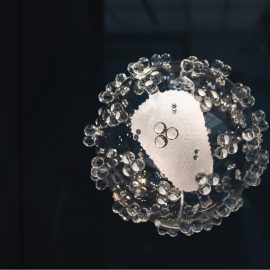

This article is an excerpt from the Shortform summary of "The Immortal Life of Henrietta Lacks" by Rebecca Skloot. Shortform has the world's best summaries of books you should be reading.
Like this article? Sign up for a free trial here .
What happened during the life of Henrietta Lacks? What was the aftermath of the collection and use of her cells? What is The Immortal Life of Henrietta Lacks timeline of key events from the book?
The Immortal Life of Henrietta Lacks tells the story of a woman whose cells were taken without permission and continue to be used for profit. This Henrietta Lacks timeline explains what happened to Henrietta Lacks and her cells.
Learn more about the aftermath of her death and getting recognition for her contribution to science in the Henrietta Lacks timeline.
Henrietta Lacks Timeline: 1920s–1950s
Loretta Pleasant, called Henrietta, was born in 1920 in Roanoke, Virginia, and raised in a small town in Virginia called Clover. In 1951, Henrietta went to Johns Hopkins Hospital after discovering a lump on her cervix. Her doctor took a sample of the lump for a biopsy. The tumor proved malignant.
Sometime after her course of treatment ended, Henrietta began to feel aches in her abdomen. Initially the doctors found nothing wrong, but after Henrietta returned to Hopkins several times, a doctor ordered an X-ray and found a mass blocking her urethra. It was inoperable. In a matter of weeks tumors colonized her body, and she was admitted to the hospital to undergo treatment to ease her pain and perhaps prolong her life. She died on October 4, 1951, less than a year after she first visited Hopkins.
After an autopsy, during which more samples were taken from Henrietta’s body without her family’s informed consent, Henrietta was buried in Clover in an unmarked grave.
Henrietta Lacks Timeline: 1950s–1960s
Perhaps the most destructive outcome of Henrietta’s death was that Henrietta’s adult cousin, Galen, and his wife, Ethel, moved in with the Lackses. Deborah, only ten years old, was physically abused and pursued sexually by Galen, and all the children, but especially Joe, were beaten by Ethel. Ethel’s abuse of Joe would cause permanent emotional damage: Joe, who would later change his name to Zakariyya in jail after being found guilty of murder, would struggle with anger his entire life.
Henrietta Lacks Timeline: 1970s–1980s
In 1975, a Rolling Stone reporter writing a story on the widespread contamination of cell lines with HeLa reached out to the family. When the article appeared in 1976, it had a major impact in the wider culture. It was the era of the Black Panthers, and scholars and activists had uncovered widespread abuses of research subjects and medical patients on the basis of their race.
Henrietta Lacks Timeline: 1990s–2000s
1996 was a triumphant year in the Lacks family story. The BBC began filming a documentary about Henrietta and HeLa, and Roland Pattillo, a gynecologist at Morehouse School of Medicine and one of George Gey’s only African-American students, organized the inaugural HeLa Cancer Control Symposium.
Henrietta Lacks Timeline: Changes in Ethics of Cell Collection
With regard to the ethics of removing tissue samples and culturing cells, not much has changed from when Henrietta’s cells were excised in the 1950s. As of 2009, doctors still did not need to inform the people from whom cells were taken when doing research with those cells.

———End of Preview———
Like what you just read? Read the rest of the world's best summary of Rebecca Skloot's "The Immortal Life of Henrietta Lacks" at Shortform .
Here's what you'll find in our full The Immortal Life of Henrietta Lacks summary :
- How Henrietta's cells became used in thousands of labs worldwide
- The complications of Henrietta's lack of consent
- How the Lacks family is coping with the impact of Henrietta's legacy






